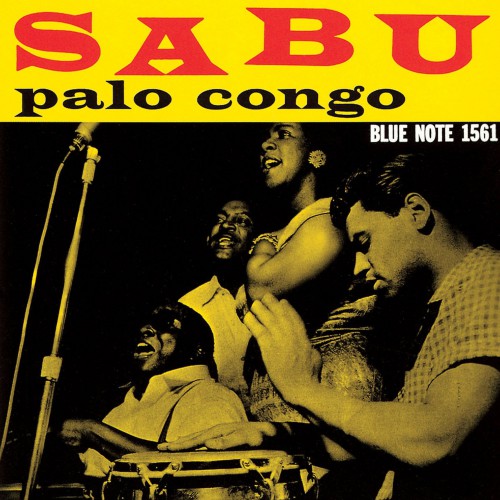
Tito Puente and His Orchestra : Dance Mania Vol 1 (#15)
Dance Mania Vol 1 | Tito Puente and His Orchestra (1958)
RCA (USA)
Latin / Jazz 37:50
Tom Baker’s career as an actor has been long and varied. Following stints as a monk and in the army, he eventually took to the stage, first joining the National Theatre under Lawrence Olivier. From there, film roles beckoned and, by the mid-1970s, he had played a variety of parts, including Rasputin in Nicholas and Alexandra (he was recommended for the role by none other than Sir Larry himself) and the evil sorcerer Koura in The Golden Voyage of Sinbad. During the 1980s and 1990s, he took on parts ranging from a sea captain in Blackadder II, Puddleglum in The Silver Chair and the ever-so-slightly bonkers narrator in Little Britain. Not bad going for any thespian; but come the sad moment of his obituary, and it is a guarantee that it will refer to just one role throughout: Doctor Who.
At least for Tom, it’s a role that has dominated his career – he played the role of the Fourth Doctor for seven years on television between 1974 and 1981, before reviving the role for a series of audio adventures in 2011. Sadly, the same cannot be said for many others. Take the likes of Tito Puente. Known as The King of Latin Music, he helped shape the sound of mambo across five decades, producing numerous acclaimed albums that developed the music. He received numerous awards for his achievements, including a posthumous Lifetime Achievement Award from the Grammys. And, yet, ask most people who Tito was and many younger people will only be able to identify him as featuring in The Simpsons episode Who Shot Mr Burns?, as the school’s music teacher (and possible suspect).
It seems that people have a defining role that remains with them – with the exception of those few cases who seem to have notched up two, such as Harrison Ford (Han Solo or Indiana Jones) or Sylvester Stallone (Rocky and Rambo). It seems a shame that, after all his hard work and success in music, Tito Puente’s legacy isn’t even in the field which he primarily excelled. Perhaps it is time to rediscover his work. It is one good thing about modern pop culture; those writing and producing it will often insert obscure references to the work of others which they admire. If, in some small way, it can encourage a few to head off and learn more about them, then surely that is a good thing. At least, being a fan of The Simpsons, I was at least aware of Tito Puente and his work, even if I hadn’t actually heard it. Take a look at some of the other artistes on this list – Machito springs to mind, having recently reviewed the album Kenya – and I hadn’t even heard of them. Turning to Puente’s album Dance Mania Vol 1, I at least had an idea of what to expect.
The sound of Latin mambo and salsa is an interesting one. My experience of the genre is limited to the Top 40 hit Bamboleo by the Gypsy Kings in 1987, and the Antonio Banderas movie The Mambo Kings (which, while I haven’t actually seen, have at least heard music from). And, as you would expect with music that was designed to get people moving on the dancefloor, there is a swing that moves the body to the songs on Dance Mania Vol 1. But there is also a tightness to the sound as well; throughout the tracks, the musicians have a unity which helps to keep the numbers on track. Yet, while the music is undoubtedly able to get the body shaking and shimmying, there is also a cheesiness to it. Perhaps it is the age of the recording – mambo is certainly something which conjures up images of the 1950s, when the genre was undoubtedly at its height. The singing doesn’t help, dating the music; when the musicians are given leave to go it alone, such as on the third track Three-D Mumbo, there is more of a freshness to the numbers.
This is an album that pushed mambo into the mainstream. Certainly it is easy to listen to, but many of the tracks merge into one. I am aware this is a complaint I’ve had of other genre albums that I’ve not felt I have truly appreciated. Perhaps it is more to do with how I am listening to the numbers; however, I fear that the real reason is that certain albums are not able to arouse my interest. That doesn’t mean I’m not appreciating them or am able to see any worth – far from it, as Dance Mania is a good record, full of great tunes – standouts include Llego Mijan and Hong Kong Mambo (the sound not dissimilar in parts to Gassenhauer from Carl Orff’s Schulwerk, used to brilliant effect in the movie Badlands and influencing Hans Zimmer’s You’re So Cool). But there isn’t anything to pull me back again. While other albums had tracks which seemed to warrant repeat playing, Tito’s album is too much like background music; something to play while performing other tasks rather than an album to put on to sit back allow to wash over you without distraction. Still, it certainly lives up to its title – whatever else you are doing, you will certainly be dancing along to it. Which is perhaps all you need to ask from an album called Dance Mania.
If you have a Spotify account, you can listen to Dance Mania Vol 1 here:
Next time: Lady in Satin by Billie Holiday
